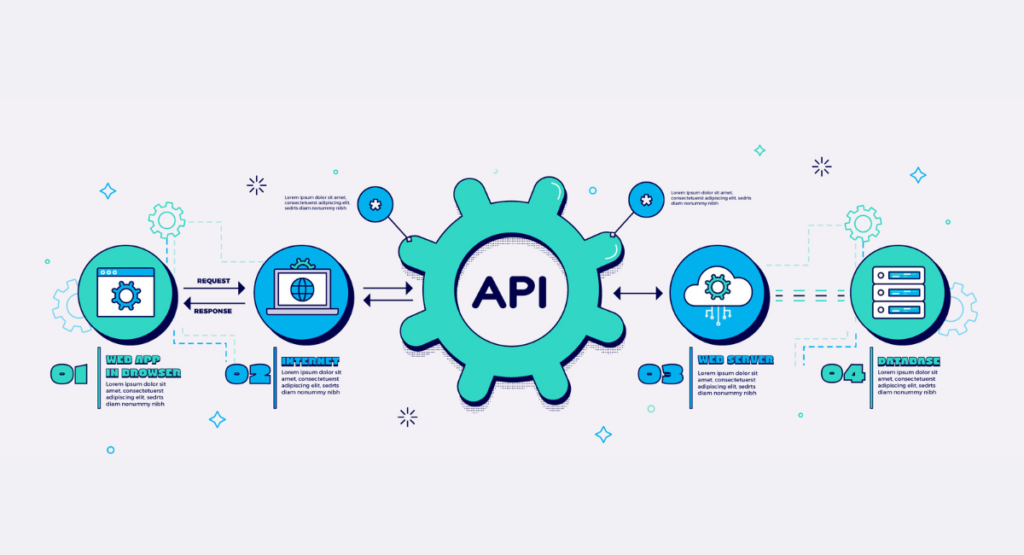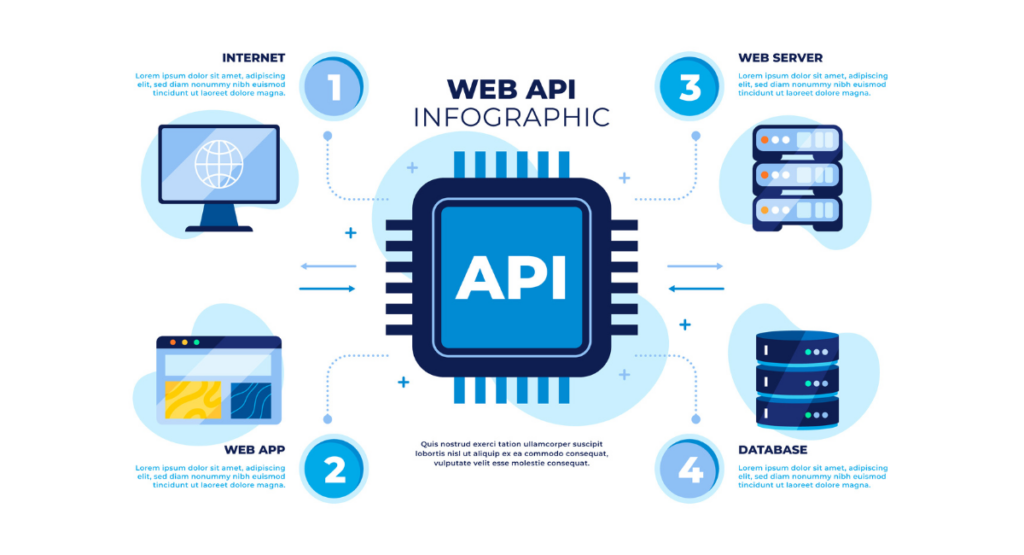Nowadays, web API testing has become one of the most critical parts of the software development process, mainly with more service interconnection through the web.
By examining seamless integration testing, we can ensure that the APIs function correctly and meet the expectations related to performance, reliability, and security.
Today, staying updated with the latest API testing interview questions will give you a significant edge in 2024. These questions are based on enhanced industry standards and technologies because they depict real-world problems and scenarios that you may encounter.
It doesn't matter if you are a beginner eager to enter into the industry or already experienced in testing and looking for revision; perfection in these questions can enhance your preparation for the next job interview.
Basic Concepts in Web API Testing

What is Web API testing?
The testing of Web APIs involves the validation of APIs' functions, reliability, performance, and safety. It is usually a process in which the tested APIs are tested for their expected results by making expeditions to the endpoint of the API and checking the replies.
It thus helps to avert chances of inconsistencies or a possible failure within the API as this can have a disastrous effect on the application's performance or user experience.
Why is API testing important in software development?
API testing is very crucial in software development; it ensures that a proper dynamic is maintained between different software systems.
The process of testing APIs earlier in development always results in a successful integration process and helps identify problems early before they start exerting an effect on a much larger scale, hence saving precious time and resources.
Moreover, since APIs have a direct impact on how different system components communicate, their dependability becomes crucial for the end-to-end functionality of the complete application.
Good API testing also ensures rectifications are maintained or the conformance to standards maintained.
Common Web API Testing Interview Questions
What are the types of API testing?
Several types of API testing typically include:
- Functional Testing: It makes sure the API functionality is as intended.
- Load Testing: This involves the testing of the amount of requests the API can handle.
- Security Testing: Brings to light any flaws in the interface that the attacker can exploit.
- Reliability Testing: Testing to make sure the API consistently returns the right response.
- Integration Testing: How API interacts with identifiers and external components.
- UI Testing: This is not exactly an API testing process, but the part of the UI that communicates with the API is tested.
In numerous ways, these tests are directed at the performance and functioning of the API to determine whether it has achieved the required quality standards.
Explain the differences between SOAP and RESTful APIs.
Two web service standards are SOAP and RESTful APIs. The former is a protocol and uses XML-formatted messages to exchange information between applications, and typically over HTTP or SMTP, allowing a high degree of standardization and necessarily making it quite heavy and slow. It offers strong typing and is more secure by default.
On the contrary, REST remains an architectural style using easy, straightforward use of HTTP requests in the handling of data. RESTful APIs can communicate in three different manners: either it is in the format of JSON, XML, or even plain text.
They are lightweight in nature and faster compared to SOAP, whereby they have grown immensely popular with web services, being more flexible and easier to work with.
How do you test API security?
Testing API security involves several steps to ensure that the API is protected against potential threats:
- Authentication Testing: Verify that only authorized users can access the API.
- Authorization Testing: Check that authenticated users have permission to perform certain actions.
- Data Validation: Ensure that the API correctly handles various types of input, including malicious entries.
- Encryption Testing: Confirm that data sent over the network is encrypted and secure.
- Access Control Testing: Make sure that users can only access data and actions relevant to their permissions.
Each of these steps helps identify vulnerabilities in the API that might otherwise be exploited by attackers.
What is API mocking and why is it used?
API mocking is the process of simulating the behavior of an API without actually implementing it. It finds its usefulness mainly during development and testing, where the complete API is not available to you.
For tests, it allows developers and testers to work in parallel: With developers developing functionality in the API, testers write test cases based on the expected response.
This can accelerate the development process and help reveal issues with the API interface in time.
How do you handle authentication in API testing?
Handling authentication in API testing typically involves:
- Using key-based authentication like API keys or tokens which must be included in the API requests.
- Implementing OAuth for more complex security requirements that involve third-party services.
- Simulating different authentication states in testing environments to ensure the API responds correctly to each state.
These methods help in ensuring that the API restricts access to authorized users and functions correctly under various authentication scenarios.
Advanced Web API Testing Scenarios

Describe the process of parameterization in API testing.
Parameterization in API testing refers to the technique of dynamically changing the parameters in the API test cases. It ensures that API can handle various input scenarios effectively.
The process involves defining and using variables to replace static values in API requests, allowing testers to check the behavior of APIs under different conditions without writing multiple tests for each variation. This flexibility helps in:
- Increasing test coverage.
- Minimizing the number of test cases.
- Enhancing the robustness of API tests.
What is the role of API documentation in testing?
API documentation is crucial in testing as it serves as a roadmap guiding the test development. It includes detailed descriptions of API functions, parameters, data formats, and expected outcomes, allowing testers to understand the API's intent and behaviors. Effective documentation aids in:
- Simplifying the creation of test cases.
- Reducing misunderstanding and miscommunication.
- Providing a reference point that ensures consistency between what the API is supposed to do and what is being tested.
How do you handle error handling in API testing?
Error handling in API testing involves verifying how well an API can handle incorrect or unexpected inputs or conditions. It is critical to ensure that the API gracefully returns a proper error message and status code. Effective error testing should:
- Validate response status codes, error messages, and headers.
- Test for various error conditions like invalid input parameters or authentication failures.
- Ensure that the error outputs are informative and secure without revealing too much information that might lead to security breaches.
Explain the significance of load testing in API testing.
Load testing is the practice of API testing that identifies whether an API is able to really perform under extreme conditions, such as peak time loads of traffic or data.
What is important to notice is how scalable and responsive the API is. It helps to detect bottlenecks or keeps the API working and reliable under intense load basically, everything that resilient applications have a need for.
What are the best practices for handling API versioning?
Handling API versioning involves managing changes to the API without disrupting the existing client applications. Best practices include:
- Using sensible versioning numbers for each significant change.
- Maintaining backward compatibility whenever possible.
- Keeping a clear deprecation policy to inform users about the lifecycle and support of various API versions.
- Implementing version negotiation using headers or URL paths to allow flexibility in accessing different API versions.
Coding and Automation in Web API Testing
What are some popular tools for API testing?
Several tools have gained popularity for API testing due to their effectiveness and ease of use, including:
- Postman: Known for simplicity and ability to quickly set up complex tests.
- SoapUI: Useful for both REST and SOAP services.
- Apache JMeter: Great for load testing and also supports performance and functional testing.
- Rest-Assured: Ideal for automating REST API tests directly within Java code.
How do you automate API testing?
Automating API testing involves using a set of tools and scripts to perform tests automatically without manual intervention. Automation is implemented by:
- Writing test scripts in various programming languages supported by the chosen API testing tools.
- Configuring the test environment and API endpoints.
- Executing tests and comparing the expected outcomes with the actual results.
- Integrating API tests into the CI/CD pipeline to ensure continuous testing and deployment.
Discuss the importance of scripting in API testing.
Scripting in API testing is essential for creating flexible and robust test scenarios that are difficult to execute manually.
It allows testers to simulate complex user interactions, create, manipulate, and validate data dynamically, and integrate tests into automated build and deployment processes.
Scripting enhances test accuracy and comprehensiveness, making it a critical skill for effective API testing.
Industry-Relevant Web API Testing Questions
How do you ensure the scalability of APIs?
An API that is properly designed should always ensure issues of scalability. Enough planning for a high load should be taken, while the appropriate API should be able to handle the increased traffic without any degradation in performance.
The tools that can majorly assist in this regard are load and stress testing tools, which assist in determining the maximum operating capacity for an API and existing bottlenecks that might impact its scalability.
In addition, caching and rate limiting strategies may be deployed to manage loads. One should also not forget about mere infrastructure decisions, like employing load balancers and distributing the APIs on several servers or even regions, to better spread its loads.
What metrics do you consider for API performance testing?
When considering metrics for API performance testing, several key indicators are commonly evaluated to ensure efficiency and reliability. These include:
- Response Time: Measures how quickly the API can provide a response after a request.
- Throughput: Indicates the number of requests that can be handled within a particular time frame.
- Success Rate: The percentage of requests that are successfully handled without errors.
- Error Rate: Tracks the number of failed requests compared to successful requests.
- Resource Utilization: Assesses the amount of server resources (CPU, memory) used when handling requests.
Monitoring these metrics allows testers to understand the performance of the API under various conditions and make necessary adjustments.
How do you design test cases for API testing?
Designing test cases for API testing involves understanding the API specifications thoroughly and identifying all possible input combinations to test all parts of the API.
Test cases should cover positive scenarios, negative scenarios, and edge cases. Key steps include:
1. Define the purpose of the API.
2. Identify the request parameters and the expected output.
3. Consider the effects of different parameter combinations.
4. Create test cases to verify both successful behavior and error handling mechanisms.
5. Ensure security aspects are tested, including authentication and data integrity.
Explain the concept of API contract testing
API contract testing is a type of testing that verifies interactions between different software services follow a defined contract.
Essentially, it checks whether the API meets the agreed expectations of both the consumer and the provider. This testing is crucial for ensuring that both parties agree on how the API behaves and the data that it exchanges.
Tools like Swagger or Postman can be used for automating contract testing, ensuring that the agreement is consistently adhered to through all stages of development.
How do you handle API version compatibility issues?
Handling API version compatibility issues involves several strategies to avoid disrupting the client applications. These include:
- Versioning: Introducing new versions of the API while maintaining older versions at least temporarily.
- Deprecation Policy: Clearly communicating future deprecation of API versions and providing sufficient time for clients to migrate.
- Documentation: Providing detailed documentation for each version to help developers understand changes and migration paths.
- Using headers or URL paths to direct requests to the appropriate version of the API.
Preparation Tips for Web API Testing Analyst Interviews
Practice mock interviews
Practicing mock interviews should be an essential aspect of preparing for API testing interviews.
Simulated interviews for typical questions asked in the interview will help in adjusting answers to basic questions, getting real-time feedback, and developing proficiency in improving power of communication and technical explanation skills.
It is fruitful when we encounter types of questions which are of both technical and scenario-based nature.
Stay updated with industry trends in API testing
Keeping abreast of the latest developments and trends in API testing is crucial. This can be achieved by reading industry blogs, attending webinars and conferences, and participating in community forums.
Understanding new tools, technologies, methodologies, and best practices in API testing can provide a competitive edge in interviews.
Focus on practical implementation of concepts
It's essential to not only understand theoretical concepts but also to focus on their practical applications. Gain hands-on experience by working with different API testing tools and projects.
This practical knowledge will not only boost your confidence but also enhance your ability to discuss real-world scenarios during interviews.
Revise key concepts and terminologies
Before attending interviews, make a revision checklist of key concepts and terminologies related to Web API testing. This could include understanding REST, SOAP, OAuth, API endpoints, and more.
Clear understanding of these basic components will help you articulate your answers more clearly and demonstrate your expertise.
Seek feedback and improve your responses
After practicing or participating in mock interviews, always seek feedback. Understand where you can improve and work on refining your answers accordingly.
Constructive feedback will help you address any weaknesses and better prepare you for the actual interview.
Book a Demo and experience ContextQA testing platform in action with a complimentary, no-obligation session tailored to your business needs.
Conclusion
Preparing for a Web API testing interview requires a solid understanding of both theoretical concepts and practical skills.
By practicing these questions, you can increase your confidence and enhance your ability to demonstrate your knowledge effectively during interviews.
Remember, the key to success is not only knowing the answers but also understanding the principles behind them and being able to apply them in real-world scenarios.
Keep yourself updated on the latest trends and tools in API testing to remain competitive in the field. Good luck!
Also Read - Best 14 CI/CD Tools You Must Know 2024
